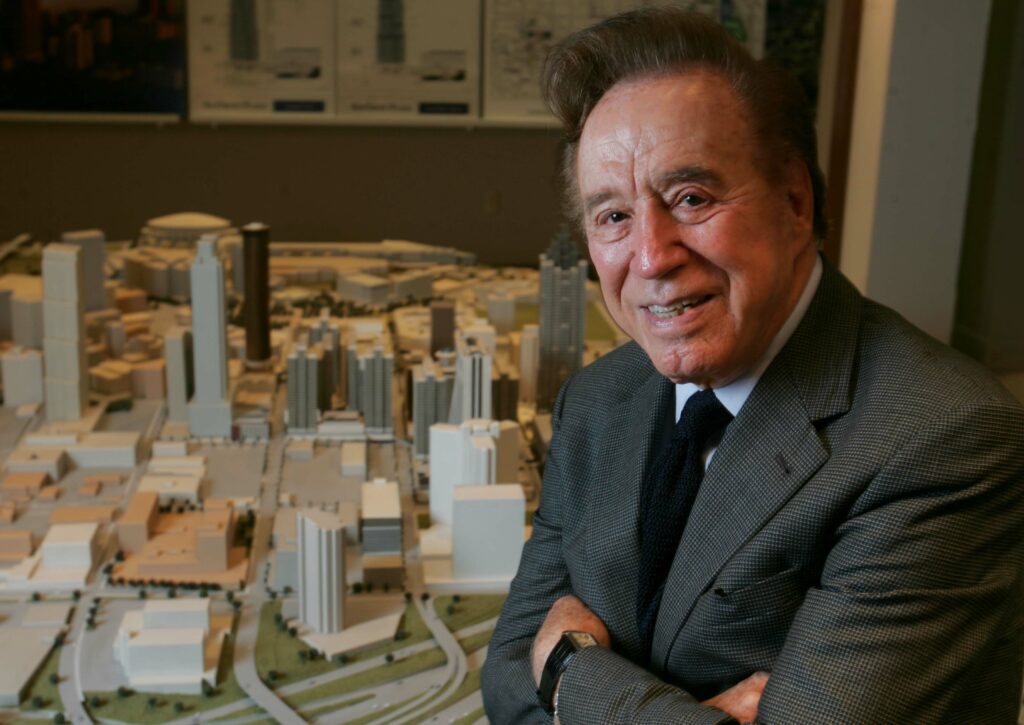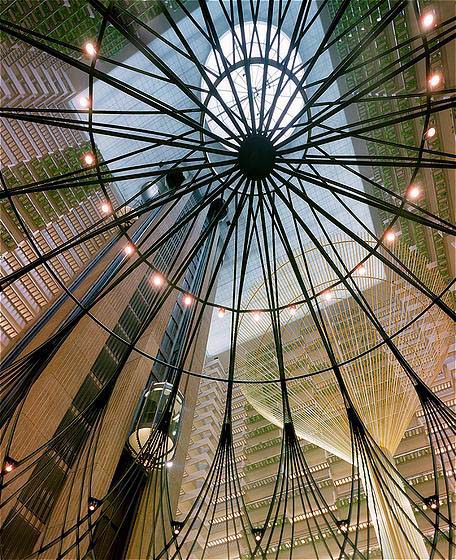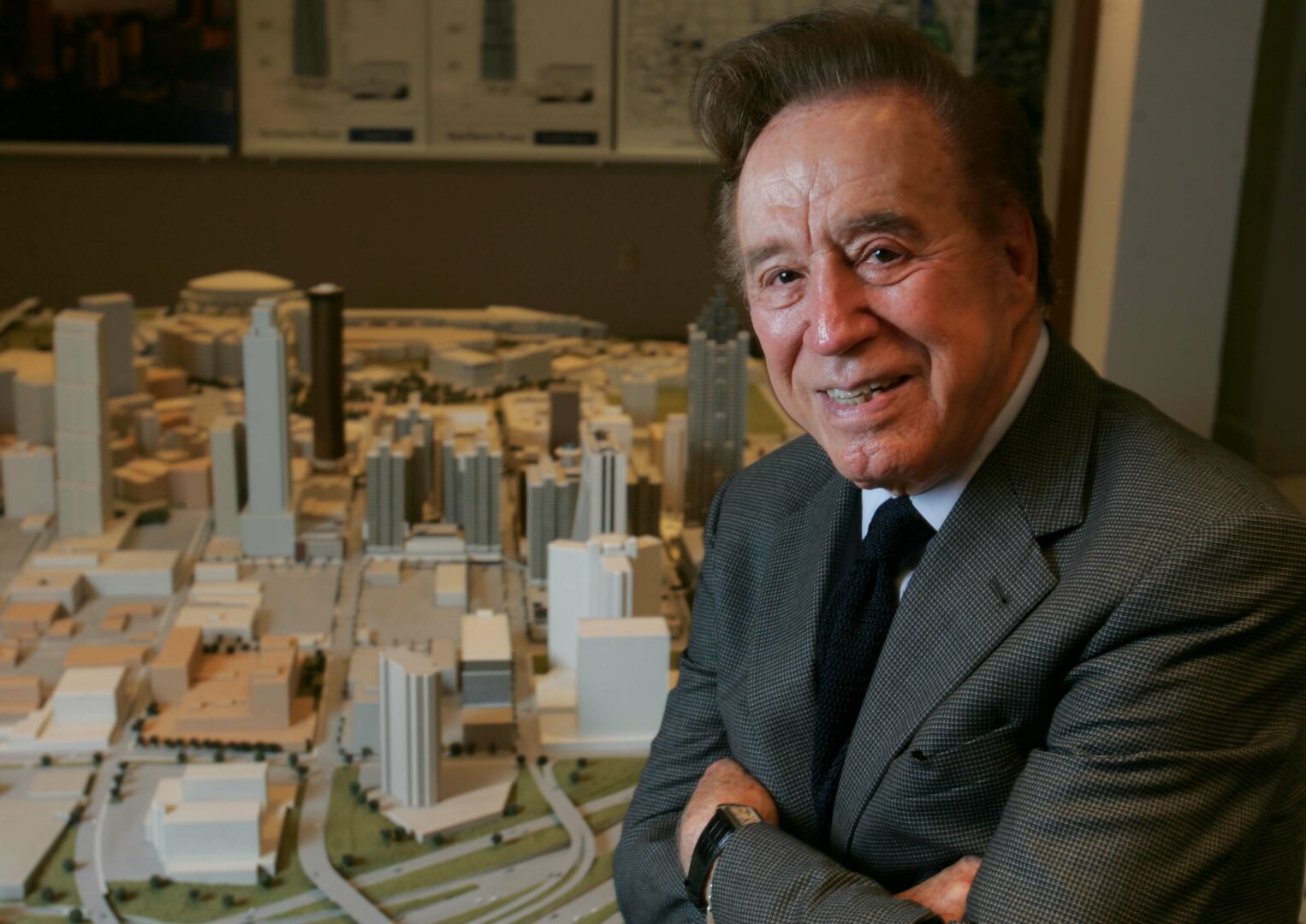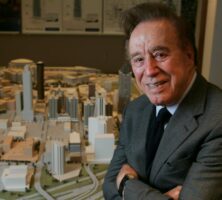John Portman, a prominent twentieth-century architect, established his early reputation in Atlanta by combining the role of architect with that of developer. Because he often personally contributed to the financing of his projects, Portman enjoyed a degree of independence in fulfilling his architectural visions.

Courtesy of Atlanta Journal-Constitution.
John Calvin Portman Jr. was born to Edna and John Portman on December 4, 1924, in Walhalla, South Carolina. He grew up in Atlanta and served in the navy during World War II (1941-45) before graduating in 1950 with a degree in architecture from the Georgia Institute of Technology. In 1953 Portman opened an architectural firm in Atlanta, known today as John Portman and Associates. The firm is part of the Portman Companies, which also includes Portman Holdings, a real-estate development company, and AmericasMart, a home decor wholesaler.
Portman designed numerous buildings in Atlanta, including office complexes and hotels, that were intended to revitalize the city’s downtown area. His Peachtree Center Office Building (1965) in Atlanta established a model for multipurpose complexes globally, and his famous Hyatt Regency Hotel (1967), with its 22-story lobby of 120 feet on each side, was the prototype of countless atrium hotels that he and others built during the 1970s and after. His rotating Polaris Restaurant (1967) atop the Hyatt and the Midnight Sun Restaurant (1968) became tourist attractions.

Courtesy of Hyatt Press Photo Library
Peachtree Center, which functions as a city within a city, has revived and virtually redefined the modern-day agora and convention center. The center continued to develop in subsequent decades with the additions of office towers, hotels, public retail space, and wholesale market centers. Most notable among these additions are the Apparel Mart (1979, 1992), a concrete fashion showroom, and Inforum (1989), a glass technology mart joined by sky bridges. Adherents of the New Urbanist school criticized these structures as insular environments that lacked integration with the city. Such criticism marks a certain irony in Portman’s career, since he was early praised for carving urban spaces from a decaying downtown and for stimulating and guiding the rejuvenation of Atlanta’s center.
Portman’s Westin Peachtree Plaza Hotel (1976) extended a 73-story glass cylinder of 1,100 guest rooms from the core of a raw concrete base, with a 90-foot-high, skylit lobby located between the elevator core and the rectangular concrete walls of the base. Portman’s Atlanta Marriott Marquis (1985) features a 50-story lobby, designed with the aid of a computer, and provides 1,675 guest rooms on splayed floors, which dramatically overhang a grandiose atrium.
In addition to his work in Atlanta, Portman’s other significant designs include buildings in several major U.S. cities, such as the Embarcadero Center in San Francisco, California (1971-76, 1988); the Renaissance Center in Detroit, Michigan (1977); and the Bonaventure Hotel in Los Angeles, California (1977). These projects were followed by Marina Square (1987) in Singapore and Shanghai Centre (1990) in China, both of which established Portman’s international reputation.
Within Georgia, Portman’s most famous building outside Atlanta is his beach house, Entelechy II (1986), on Sea Island. The beach house was built as a studio and weekend retreat for Portman, who had become increasingly interested in painting, sculpture, and furniture design. The nearly 22,000-square-foot concrete beach house also became a museum for Portman’s art collection. Many pieces in the collection are of his own making and include canvases, which are mostly abstract expressionist in character; sculptures, inspired by Matisse, Dubuffet, and others; and furniture. Oriental and archaic themes appear in his paintings as well as in his sculptures.
In the final decades of his life, Portman increasingly sought work abroad, completing projects in Asia, Europe, and the Middle East. He nevertheless remained active in Atlanta’s civic life and was engaged in the construction of Coda, a landmark skyscraper designed for his alma mater, Georgia Tech, at the time of his death in 2017.







